This post was earlier cross-posted at Leonid Schneider's site, hence the unfrivolous tone. The version there is improved by Leonid's editing, background details and frame-story
TigerBB8 invited me to help explore the rarefied domain of high-end abstract mathematics. I was happy to oblige, in the hope of demonstrating that academic malfeasance is not restricted to nanofiction and Bad Biology. Some of what follows are Tiger's words and findings, and some are mine.
To whet appetites, here are an unexpectedly-similar pair of passages. Below at left, some uncontroversial results from Zhang & Piskarev (2015) [4]. Valery Piskarev claims an affiliation to the University of Wollongong (south of Sydney), though there is no record of him there, nor indeed of his "Faculty of Science and Technology". In fact both authors praise the hospitality of a non-existent Department there, and it is possible that they experienced a folie-à-deux hallucination brought about by the rigors of long-haul international flights.
This work was completed while the authors were visiting the Department of Mathematical Sciences at the University of Wollongong, and they are grateful for the kind hospitality of the Department.At right, in the low-profile pages of the organ of a Serbian learned society, Qiao & Deng independently rode the same train of thought two years earlier. Yulian Zhang and Lei Qiao are based in the same city, Zhengzhou (at Henan Institute of Education and Henan University of Economics and Law respectively) so it is conceivable that they know each other and that the repetition across the two papers was an act of friendly homage rather than that ugly word, "plagiarism".
Another example? How about He & Pang (2019b) [24] and Meng (2019) [26]?
Here we find ourselves trespassing on the RetractionWatch side of the street. Credit to Adam and Ivan at RW for picking up on four retractions of head-scratching perplexity, from three Springer-Nature titles: Journal of Inequalities and Applications, Advances in Difference Equations, and Fixed Point Theory and Applications.
The four were distinguished by the presence of untraceable individuals as corresponding authors, Ikudol Miyamoto and Beatriz Ychussie, whose purported affiliations to Nagoya University and Roskilde University respectively were rejected by those institutions. Retraction also looms for a fourth
Now the academic world is admirably non-judgmental on details of ontological status (Gogol would feel at home there), and fictive irreality is seldom an impediment to acquiring a CV. The main reasons for those retractions centered on the plagiarism, and the duplicate submissions elsewhere with different authorship.
In fact these cases are just the tip of the rabbit-hole, the entrance to the iceberg. Inquiry reveals a recent squall of other retractions from the same Springer journals, displaying an almost Dickensian nominative creativity, not all of them lodged in the RW Database. It is as if exotic co-authors were being invented, to signal the international reputation and far-flung collaborative capacity of the more reality-based authors.
- 2 x Tanriver Ülker (Universidad Austral, Argentina)
- Mohamed Vetro (University of Ioannina, Greece) [5]
- Costanza T. Viouonu (Hasselt University, Belgium)
- 2 x Alexander Yamada Jr (Stockholm University)
- Nanjundan Yamini (University of West Bohemia, Plzen, Czechia) [12]
- 3 x Beatriz Ychussie (Roskilde University, Denmark)
- Eve Yuzbasi (Istanbul University) [2]
- Ahmed Zama (University of Mosul) [10].
 Clearly the House of Springer suspect that shenanigans are widespread (though they are not forthcoming about the details of those suspicions), and kudos to them for admitting (amid shock) that gambling is going on in their establishment, and taking steps to clean up their stable. Less kudos, though, for retracting only one of each pair or triad of duplicated publications.
Clearly the House of Springer suspect that shenanigans are widespread (though they are not forthcoming about the details of those suspicions), and kudos to them for admitting (amid shock) that gambling is going on in their establishment, and taking steps to clean up their stable. Less kudos, though, for retracting only one of each pair or triad of duplicated publications.Anyway, we are here to help with their Augean task, with a spreadsheet of (so far) 50-plus entries. Checking those unscathed duplicates helped. The nominally-inventive dramatis personae swells to feature
- 2 x Corchado Peixoto-de-Büyükkurt at the University of Delaware
- Valery Piskarev [4]
- Ben Rodrigo (Universidad de Talca, Chile) [19]
- Hugo Roncalver (Technische Universität Berlin, Germany) [15]
- Francisco Marco Usó (University of Nigeria, Nsukka) [13]
- Robert Vargas-De-Teón (UNAM, México)
- John Vieira (Universidade Federal de Minas Gerais, Brazil)
- Muhammad Aslam Zaprawa (Alexandria University, Egypt)
- Maria Hampshire Zylbersztejn (Universidade Federal do Rio de Janeiro) [11].
If it were not for the over-representation of the end of the alphabet, the roll-call could easily be a Third Policeman homage.
We are advised [pers. comm] that the Technische Universität have no record of a Hugo Roncalver as visiting professor (or "Goncalver" according to his totally legitimate Gmail e-address), nor even of the "Institute of Mathematical Physics" where he purportedly taught. They have asked for a retraction / correction of the paper he supposedly wrote there [15], but the due processes of scholarly correction are a very slow-grinding mill indeed.
Slightly less cosmopolitan but still internationally recognised, we meet Yadong Liao (Jagiellonian University, Poland); Jing Liu ("Osaka Kyoyobu University"); Hong Wang (Universiti Kebangsaan Malaysia); and Jiani Mu and Jing Zhang, both of Faculty of Science and Technology, Tapee College, Thailand, where they really need to screen their fictitious affiliates better (one retracted and one not).
For the majority of entries in our spreadsheet (some of them retracted), the authors are confined to mainland China, having declined to pay the papermill a premium fee to receive the imprimatur of an imaginary main author overseas. Some of the actual co-authors seem to have paid to have their careers adorned with imaginary visiting appointments. Did Zongjing Jiang really enjoy the "kind hospitality of Universidad de Granada, where portions of this paper were written"? One Wei Li's claim to have attended Norwegian University of Science and Technology, denied by that institution, may have been inspired by a different Wei Li.
Now our hypothetical papermill operators are loath to see their ingenuity go unrecognised, and they include citations to these engagingly-named co-authors in the more recent papers they sell to new customers, and those papers accrue bogus citations in turn, and it all helps one to trace the trail of forgeries, using citation services.
Self-contained, self-citing networks of mathematical fiddle-faddle are nothing new. In the most celebrated case, one Mohamed El Naschie founded the journal Chaos, Fractals & Solitons, then remained Editor-in-Chief when ownership passed to Elsevier, allowing him to foist paper after paper of pure bafflegab upon an uncomprehending world. He employed his own notation, his own unique rules for ratiocination, and a small army of sockpuppet pseudonyms to defend his theories.
Mathematical physicist professor John C. Baez of the University of California, Riverside has called El Naschie's work "undisciplined numerology filled with impressive buzzwords"El Naschie's largest contributions to science were perhaps to help discredit Elsevier publishing ethics, and the use of Impact-Factor citations-index metrics for rating journals and institutions. Archived copies are still available for much of the no-longer-extant "El Naschie Watch" blog.
"Senior people are above this childish, vain practice of peer review."
Returning to our hypothesis of a papermill, fictional-character creation stopped after April 2018, and the focus broadens from the presence of spectral co-authors. Many papers fell into our list through virtue of extensive copy-pasting - the material coming sometimes from earlier entries in the list, and sometimes from an outside and presumably unwilling donor. Is it time for another example?
Liu (2019) [25], here at right, was assembled using mathematical masonry taken from Zaouche (2018) at left:
Showing admirable economy, part of that excerpt from Zaouche (2018) reappeared in Ren, Yang & Li (2020) [27]:
Which is not to say that passages are recycled unchanged! One hallmark of this literature is the insertion of the name of Schrödinger (or "Schrödinger type"), not to invoke any of Erwin S.'s specific contributions to physics and mathematics, but more in the way of a talismanic Word of Power, transforming a purloined passage and asserting ownership of it.
Products of this transformation include the concepts of "Schrödingerean predator-prey system", and "the Schrödinger-prey operator"... a recognition, perhaps, that Schrödinger's Cat does not exist in isolation (or nonexist), but is part of a broader probability-distribution ecosystem. So special commendation goes to "Existence of weak solutions for two point boundary value problems of Schrödingerean predator-prey system and their applications" (Lü & Ülker 2017) [17], and "New results on the existences of solutions of the Dirichlet problem with respect to the Schrödinger-prey operator and their applications" (Chen & Zhang 2017) [18], for they display the mathematical cargo-cult in its most egregious form. The former was retracted, the latter not, although both are patently plagiarised from Zhang et al (2015).


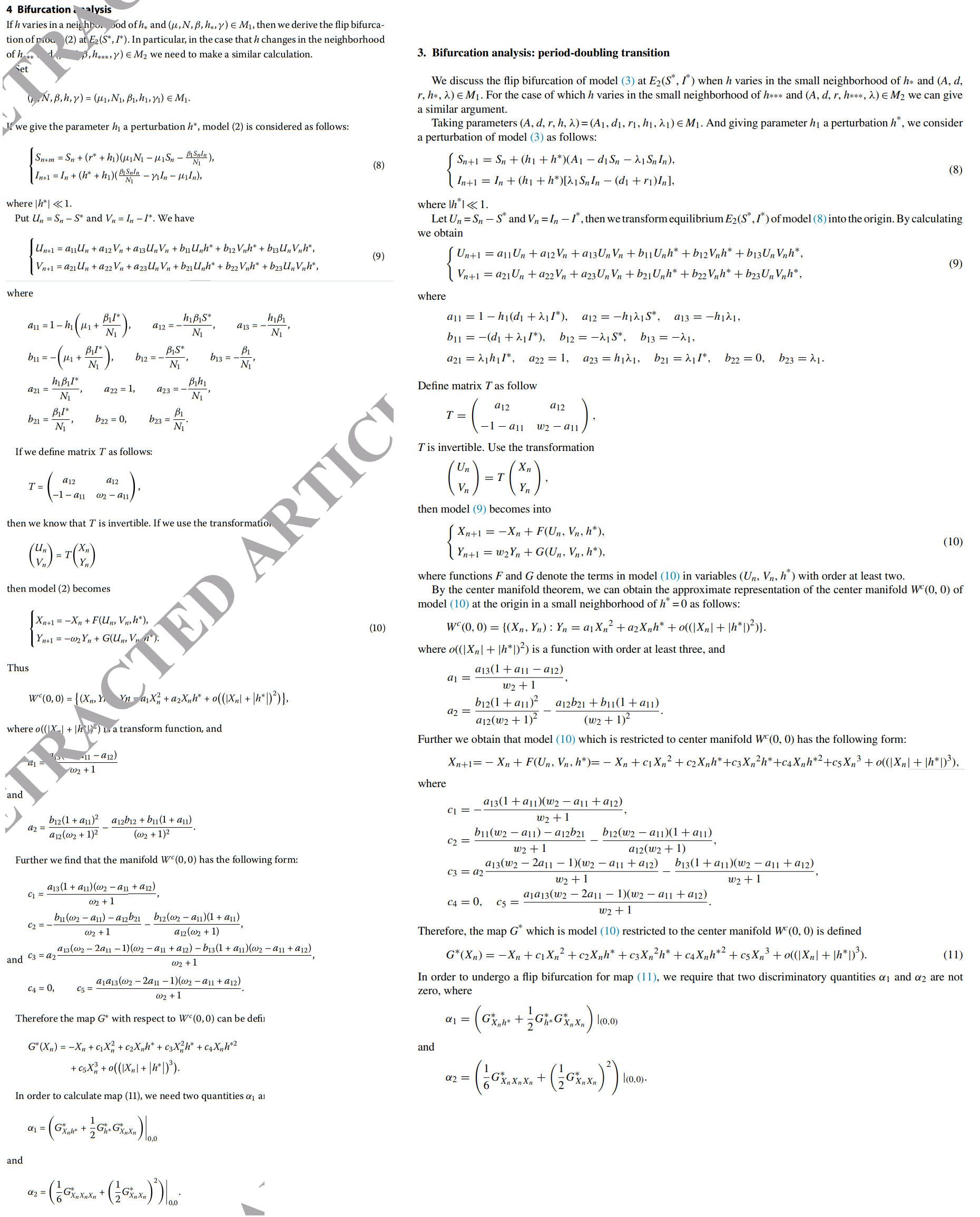 It is also instructive to compare sections of either paper with passages from Hu, Teng & Zhang (2014), shown here at right.
It is also instructive to compare sections of either paper with passages from Hu, Teng & Zhang (2014), shown here at right.The Schrödinger Operator is familiar to physicists, but there exists a verbal equivalent whereby affixing the abbreviated form "-Sch" to any other eponymous boundary condition or procedure for solving differential equations elevates it to an entire new level, infusing it with Sch-ness. The Sch-tic enriches this literature with Dirichlet-Sch and Poisson-Sch and Green-Sch and Riesz-Sch. Better-defined versions of these innovations do exist outside this Hortus Conclusus of Alternative Mathematics.
For many of us, the introduction to the ecological / economic niche of "papermills" was the paradigmatic example of the meta-analysis specialists. In that instance, one of the personnel turning the crank on the production line didn't have a grasp of the statistical underpinnings, and somehow they mashed "Begg's test" together with "Egger's test" into a single portmanteau Begger's test, then copied the blunder into each subsequent use of the template. This had the happy corollary that the Forces of Rectitude and Retraction could simply search the journals' archives for a Begger's Funnel Plot, secure in the knowledge that any study-shaped phenomenon containing such an artefact was an exercise of creativity that had never felt the surly bonds of primary data sources. Feel free to joke about how this beggars belief.
A similar diagnostic hallmark exists in the present corpus of work. May and Oster (1976) wrote a foundational document in the annals of fractal attractors and Hopf-bifurcation critical points and chaotic non-linear dynamics, and if you weren't there in the 1980s when that whole field
Here is another curious parallelism, between Sun (2018) at left [22] and Zhang et al (2018) at right [23].
The same principal value appears to be defined as a Schrödinger transform and the Radon transform, while the "Schrodinger-type identity" takes the place of a "Poisson inequality". Wan et al (2019) and Yang & Ren {14} respectively fill the role of "obtain[ing] more general sufficient conditions by weakening the above condition". Then Lü & Ülker {14} and Huang {10}, or Luan & Vieria {16} respectively fill the role of "establish[ing] the first necessary and sufficient condition in the time domain and a parallel result in the frequency domain for the" Schrodinger-type identity / Poisson inequality. And so on. None of these citations match the claims made on their behalf.
There is some uncertainty whether "It was proved that the above identity holds if h, g ∈ L2(R) satisfy supp ˆf ⊆ R+ (R+ = [0,∞)) and supp gˆ ⊆ R+" by {20} or {21}, that is by Yang, D., Ren, Y.: "Dirichlet problem on the upper half space". Proc. Indian Acad. Sci. Math. Sci. 124(2), 175–178 (2014); or Ren, Y., Yang, P.: "Growth estimates for modified Neumann integrals in a half space". J. Inequal. Appl. 2013, 572 (2013).
The explanation might be that there are specialised roles in the papermill workshop, with different people independently compiling the main text and the References section. Thus when numbered links in the former are matched with the list of papers / chapters comprising the latter, to acknowledge a source or point to a fuller explanation, they are not in fact cogent or apposite. Conversely, we might find two overlapping Reference sections in [25] and [27] with 41 and 53 sources, ostensibly the work of unrelated authorial teams, who agree in 26 cases.
Another hallmark of the workshop is a pleasingly symmetric construction, where the Abstract and Conclusions are almost identical, differing only in a change of tense: the former is aspirational, heralding what will be proven, while the latter is triumphant, reiterating what has been proven. Any connection to the lemmas and Theorems sandwiched between the bookends is coincidental. Though for all I know, this A-B-A architecture could be standard in mathematical journals and not a hallmark after all.
Hu et al (2020) [28]
So below is the diagram no-one was asking for, listing (at right) the probable papermill products identified so far. The pinkish / green / blue / orange backgrounds distinguish the three journals we started with, plus a fourth, Boundary Value Problems. Black Spots distinguish the ones that Springer have retracted so far and we charge no fee for helping them retract more. Red arcs link papers that overlap substantially, either in the Springer editors' minds or our own. Grey arrows indicate when a paper in the corpus cites an earlier-published entry (or rather, earlier-submitted).The same information is in the spreadsheet and in the original PubPeer threads (accessible via links in the spreadsheet) but I like pictures. Yes, it is an unholy mess, Edward Tufte's worst nightmare, but it makes the point that there is a lot of inter-citation going on. Here's a link to a PDF version.
Some papers are in the list not because of obvious internal shenanigans, but because they cite now-retracted papers, and are cited in turn by papers of demonstrable bogosity. We should add that this heuristic is fallible. An author might include citations to papermill products to assuage the demands of a bent peer-reviewer, and not because the bogus papers were really such an inspiration.
Down the middle, more red lines link entries to outside sources of material at left... identified sources, anyway (it is easier to find origins when they were published in free-to-read journals). Earlier we commended the economy displayed in this pilferage. Another example comes from the "Schrodingerean" cycle, where the Introduction from Zhang et al (2017) plus Sections "2 Equilibrium and local stability analysis", "3 Existence of Hopf bifurcation" and part of "5 Numerical Simulation" became Wang & Roncalver (2017) [15] -- while the Introduction again, plus Section "4 Bifurcation analysis", became Lai, Sun & Li (2017) [16]. The abrupt bisection of the original created incoherence in the halves, not entirely compensated by the insertion of "Schrodingerean" at random intervals.
More grey arrows link to papers that cited papermill products, or were frequently cited by papermill products, for the Hortus Conclusus is still integrated into the academic world. Members of this surrounding penumbra might be perfectly cromulent contributions to the collectively-built edifice of mathematical knowledge, only receiving so much recognition from bogus papers because the papermillers are too lazy to vary their 'References' template... that determination would take a real mathematician to decide, for I am well out of my lane. It is sad for Yang & Ren (2014) who have been cited 11 times, that eight of those mentions came from fakes, and they have my sympathy. The same for Xu, Yang & Zhao (2013) [0], with five out of five incoming citations.
There was no room in my spaghetti diagram for the authors' grants and funding, copied from the papers into the spreadsheet. Sometimes this is "merely corroborative detail, intended to give artistic verisimilitude to an otherwise bald and unconvincing narrative". In both his papers, the nonexistent Alexander Yamada Jr acknowledges support from a nonexistent Academy of Finland grant. An untraceable US NSF Grant DMS-0913205 helped with the (minimal) living costs of Beatriz Ychussie. The equally fictional Ben Rodrigo is recipient of a FONDYCET grant that does exist but was granted in this reality to Rodrigo Ponce, also of Instituto de Matemática y Física, Universidad de Talca (Prof. Ponce has a real academic email address rather than a one-use throwaway AOL account, and a CV with no trace of the "Ben Rodrigo" paper [19]). It seems, though, that many of the actual authors in the list are supported by provincial Natural Science Foundations, or the National Natural Science Foundation, or such. How they secured that funding without the capability to write the papers expected in return, thus obliging them to call on the services of a papermill, is a question in itself.
The demands of administrative positions might be the reason why a couple of authors outsource their maths productivity. Zhiqiang Li, Yong Lu and Jianguo Sun were all Vice-Deans of various colleges (at Henan University, and Harbin Engineering University).
That brings me to another point: some authors appear in the list more than once. Curiously they sometimes use different email addresses (gmail, hotmail, etc.) for each publication, almost as if these are single-use burner e-addresses set up by the real authors for communication with the journal and then abandoned.
- Jianguo Sun has used the papermill's services seven times! One of these contributions, Wang et al (2018) [20], is a bizarre literary cross-over mashing up abstract algebra with fuzzy-logic decision theory, giving us the novel concept of "Schrödingerean TOPSIS equations". Here TOPSIS = "Technique for order performance by similarity to ideal solution". I can only suppose that it was tailored to fit the CV needs of corresponding author Yong Lu, Vice-Dean of the College of Power and Energy Engineering. This may be Peak Schrödinger.
- Zhiqiang Li appears first as one of Beatriz Ychussie's colleagues [3], then collaborating with Mohamed Vetro [5] before venturing out with a single-author paper [7]. All three subsequently received the Black Spot of Retraction.
- Those Alexander Yamada papers were shared with Tao Zhao (of Henan University of Economics and Law), who had earlier been last author of that five-times-cited paper mentioned above [0].
- Continuing with the Annals of Nonexistence: Jianjie Wang collaborated with Ahmad Zama [10], Hugo Roncalver [15], and the Malaysia-based Hong Wang [21].
- The research team of Bin Huang and Jiaofeng Wang are especially cosmopolitan, appearing first with Shi & Pu [8] but moving on to the company of the resplendent Brazil-based Maria Hampshire Zylbersztejn [11] and the Czechia-based Nanjundan Yamini [12].
- Zongcai Jiang collaborated with Corchado Peixoto-de-Büyükkurt [6], then with Francisco Marco Usó [13], before venturing out solo [14].
- Gaixian Xue appears on both sides of the Spaghetti Diagram... On the right, collaborating with Eva Yuzbasi [2] and then with the more reality-based Junfei Wang [9]. That last pair of papers are notable for their overlap with [3] and [10]. On the left side, Xue (2014) was a source of material for [3], but in compensation that paper received citations from later entries in the list. Another faculty member of Henan University of Economics and Law, Gaixian Xue may even know Tao Zhao or Zongcai Jiang or Lei Qiao.
- Getting bored now, but we find Jinjin Huang on the left-hand list as well with Huang (2017), a source of material for [17] and beneficiary of citations from later entries. Meanwhile on the right-hand list, Huang was another Ychussie colleague with [1] (the Serbian-journal paper, overlapping with [7]).
The Black Spot
A lot of people within this academic subculture seem to be acquainted with the phenomenon of fictive co-authors. You'd think that someone among them would be able to explain what's going on.Many papers brought together authors who lacked any previous English-language publications but otherwise had little in common (some are not even mathematicians, though there is no reason why high-speed railway engineers shouldn't dabble in the Higher Abstractions). It is as if they agreed to share the costs.
In total, we have 77 authors from 43 institutions, from vocational schools to top first-tier universities (not including 2 industry companies).
Earlier papers in the list (2014-2016) were marked by the presence of overseas authors for the sake of plausibility... so far overseas that they have fallen off the edge of consensus reality. As the papermill proprietors grew more confident (Dec 2016-Feb 2018), this softened to imaginary Chinese-named authors but foreign based (or with visiting scholar status), apart from Ben Rodrigo. Finally they knew that their products would be accepted without the silly-buggers.
Sources
[0] "Dirichlet problems of harmonic functions", Gang Xu, Pai Yang, Tao Zhao (2013)Boundary Value Problems doi: 10.1186/1687-2770-2013-262
[1] "The modification of Poisson-Sch integral on cones and its applications", Jinjin Huang & Beatriz Ychussie (2016)
Filomat doi: 10.2298/FIL1612291H [PubPeer]
[2] "Fixed point theorems for solutions of the stationary Schrödinger equation on cones", Gaixian Xue, Eve Yuzbasi (2015)
Fixed Point Theory & Applications doi: 10.1186/s13663-015-0275-8 [PubPeer]
[3] "Sharp geometrical properties of a-rarefied sets via fixed point index for the Schrödinger operator equations", Zhiqiang Li, Beatriz Ychussie (2015)
Fixed Point Theory & Applications doi: 10.1186/s13663-015-0342-1 [PubPeer]
[4] "A note on the boundary behavior for a modified Green function in the upper-half space", Yulian Zhang, Valery Piskarev (2015)
Boundary Value Problems doi: 10.1186/s13661-015-0363-z [PubPeer]
[5] "Levin’s type boundary behaviors for functions harmonic and admitting certain lower bounds", Zhiqiang Li, Mohamed Vetro (2015)
Boundary Value Problems doi: 10.1186/s13661-015-0421-6 [PubPeer]
[6] "Growth property at infinity of harmonic functions", Zongcai Jiang, Linbo Hou, Corchado Peixoto-de-Büyükkurt (2015)
Journal of Inequalities & Applications doi: 10.1186/s13660-015-0919-6 [PubPeer]
[7] "Boundary behaviors of modified Green’s function with respect to the stationary Schrödinger operator and its applications", Zhiqiang Li (2015)
Boundary Value Problems doi: 10.1186/s13661-015-0499-x [PubPeer]
[8] "Boundary value behaviors for solutions of the equilibrium equations with angular velocity", Jiaofeng Wang, Jun Pu, Bin Huang, Guojian Shi (2015)
Boundary Value Problems doi: 10.1186/s13661-015-0496-0 [PubPeer]
[9] "An application of the inequality for modified Poisson kernel", Gaixian Xue, Junfei Wang (2016)
Journal of Inequalities & Applications doi: 10.1186/s13660-016-0959-6 [PubPeer]
[10] "Solutions of the Dirichlet–Schrödinger problems with continuous data admitting arbitrary growth property in the boundary", Jianjie Wang, Jun Pu, Ahmed Zama (2016)
Advances in Difference Equations doi: 10.1186/s13662-016-0751-4 [PubPeer]
[11] "An extension of the estimation for solutions of certain Laplace equations", Bin Huang, Jiaofeng Wang, Maria Hampshire Zylbersztejn (2016)
Journal of Inequalities & Applications doi: 10.1186/s13660-016-1109-x [PubPeer]
[12] "An augmented Riesz decomposition method for sharp estimates of certain boundary value problem", Jiaofeng Wang, Bin Huang, Nanjundan Yamini (2016)
Boundary Value Problems doi: 10.1186/s13661-016-0664-x [PubPeer]
[13] "Boundary behaviors for linear systems of subsolutions of the stationary Schrödinger equation", Zongcai Jiang, Francisco Marco Usó (2016)
Journal of Inequalities & Applications doi: 10.1186/s13660-016-1172-3 [PubPeer]
[14] "Some Schrödinger-type inequalities for stabilization of discrete linear systems associated with the stationary Schrödinger operator", Zongcai Jiang (2016)
Journal of Inequalities & Applications doi: 10.1186/s13660-016-1180-3 [PubPeer]
[15] "New applications of Schrödinger type inequalities to the existence and uniqueness of Schrödingerean equilibrium", Jianjie Wang, Hugo Roncalver (2017)
Journal of Inequalities & Applications doi: 10.1186/s13660-017-1332-0 [PubPeer]
[16] "Stability and direction for a class of Schrödingerean difference equations with delay", Mingzhu Lai, Jianguo Sun, Wei Li (2017)
Advances in Difference Equations doi: 10.1186/s13662-017-1132-3 [PubPeer]
[17] "Existences of weak solutions for two point boundary value problems of Schrödingerean predator-prey system and their applications", Fengjiao Lü, Tanriver Ülker (2017)
Advances in Difference Equations doi: 10.1186/s13662-017-1213-3 [PubPeer]
[18] "New results on the existences of solutions of the Dirichlet problem with respect to the Schrödinger-prey operator and their applications", Xu Chen, Lei Zhang (2017)
Journal of Inequalities & Applications doi: 10.1186/s13660-017-1417-9 [PubPeer]
[19] "Notes on the result of solutions of the equilibrium equations", Gaiping He, Lihong Wang, Ben Rodrigo (2018)
Boundary Value Problems doi: 10.1186/s13661-018-0959-1 [PubPeer]
[20] "Existence and boundary behavior of weak solutions for Schrödingerean TOPSIS equations", Yong Wang, Jianguo Sun, Liang Kou, Yong Lu, Guodong Zhao, Wenshan Wang, Qilong Han (2018)
Boundary Value Problems doi: 10.1186/s13661-018-0927-9 [PubPeer]
[21] "Existence and uniqueness of solutions for the Schrödinger integrable boundary value problem", Jianjie Wang, Ali Mai, Hong Wang (2018)
Boundary Value Problems doi: 10.1186/s13661-018-0993-z [PubPeer]
[22] "New Poisson inequality for the Radon transform of infinitely differentiable functions", Ziyao Sun (2018)
Journal of Inequalities & Applications doi: 10.1186/s13660-018-1805-9 [PubPeer]
[23] "Schrödinger-type identity for Schrödinger free boundary problems", Xingjian Zhang, Duo Liu, Zining Yan, Guodong Zhao, Ye Yuan (2018)
Boundary Value Problems doi: 10.1186/s13661-018-1058-z [PubPeer]
[24] "A modified Schrödinger-type identity: uniqueness of solutions for singular boundary value problem for the Schrödinger equation", Hongjun He, Zhifeng Pang (2019)
Boundary Value Problems doi: 10.1186/s13661-019-1261-6 [PubPeer]
[25] "Applications of maximum modulus method and Phragmén–Lindelöf method for second-order boundary value problems with respect to the Schrödinger operator", Zhen Liu (2019)
Boundary Value Problems doi: 10.1186/s13661-019-1267-0 [PubPeer]
[26] "A new application of Schrödinger-type identity to singular boundary value problem for the Schrödinger equation", Bo Meng (2019)
Boundary Value Problems doi: 10.1186/s13661-019-1279-9 [PubPeer]
[27] "Nonlinear conservation laws for the Schrödinger boundary value problems of second order", Ming Ren, Shiwei Yun, Zhenping Li (2020)
Boundary Value Problems doi: 10.1186/s13661-019-01311-5 [PubPeer]
[28] "Existence of global solutions to a quasilinear Schrödinger equation with general nonlinear optimal control conditions", Yisheng Hu, Songhai Qin, Zhibin Liu, Yi Wang (2020)
Boundary Value Problems doi: 10.1186/s13661-020-01370-z [PubPeer]
------------------------------------------------------------
AFTERTHOUGHT IN THE FORM OF A COMMENT #1I noted that co-authors Yamada and Ychussie claim to be supported by Academy of Finland Grant No. 176512 and NSF Grant DMS-0913205, which are as non-existent as the authors themselves, while Rodrigo receives FONDYCET grant 11130619, which does exist but is one of several elements of a stolen identity. Those do not exhaust the interesting discoveries within the Funding / Grants column of Tiger’s spreadsheet.
The work of Yang & Ren (2014) and Zhao (2014) was supported by National Natural Science Foundation of China (Grant Nos. U1304102, 11301140). A Google search for those grants finds them supporting many papers by some familiar authors:
- “Rarefied sets at infinity associated with the Schrödinger operator” (Gaixian Xue 2014)
- “On the Tumura-Clunie Theorem and Its Application” (Gaixian Xue and Jinjin Huang)
- “MATSAEV’S TYPE THEOREMS FOR SOLUTIONS OF THE STATIONARY SCHRODINGER EQUATION AND ITS APPLICATIONS” (Lei Qiao 2016)
- “Derivatives of meromorphic functions and polynomial functions” (Pai Yang & Lei Qiao 2016)
- “Solutions of the Dirichlet–Sch problem and asymptotic properties of solutions for the Schrödinger equation” (Lei Qiao 2017)
- “Asymptotic behaviors of Green-Sch potentials at infinity and its applications” (Lei Qiao 2017)
- “Asymptotic behavior of Poisson integrals in a cylinder and its application to the representation of harmonic functions” (Lei Qiao 2018)
… and many more. Even for those authors who are not Lei Qiao, there is a link to the Maths College of Henan University of Economics and Law, so I assume that the grant is supporting a research group rather than any one individual.
AFTERTHOUGHT IN THE FORM OF A COMMENT #2
A lot of the material in this whole oeuvre can be traced back to a 2012 paper by Pinhong Long, Zhiqiang Gao, and Guantie Deng: “Criteria of Wiener Type for Minimally Thin Sets and Rarefied Sets Associated with the Stationary Schrodinger Operator in a Cone”… which was in turn based on Long’s 2012 PhD dissertation.
That paper has only been cited a few times (by Tao Zhao, 2014 and by Gaixian Xue, 2014), but parts of it are recognisably recycled in papers by Lei Qiao and by Qiao’s frequent co-author G.-T. Deng, either separately or together.
Now Long was building on earlier 2002 / 2007 work by Miyamoto and Yoshida. By way of Long, those authors received no end of citations from the Qiao / Deng school – should I call it the Henan school? — while the real Ikuko Miyamoto was presumably the inspiration for the fictitious “Ikudol Miyamoto” who provided Zhenhai Yan and Guojun Yan with Non-Chinese-Coauthor gravitas in a now-retracted 2015 paper.



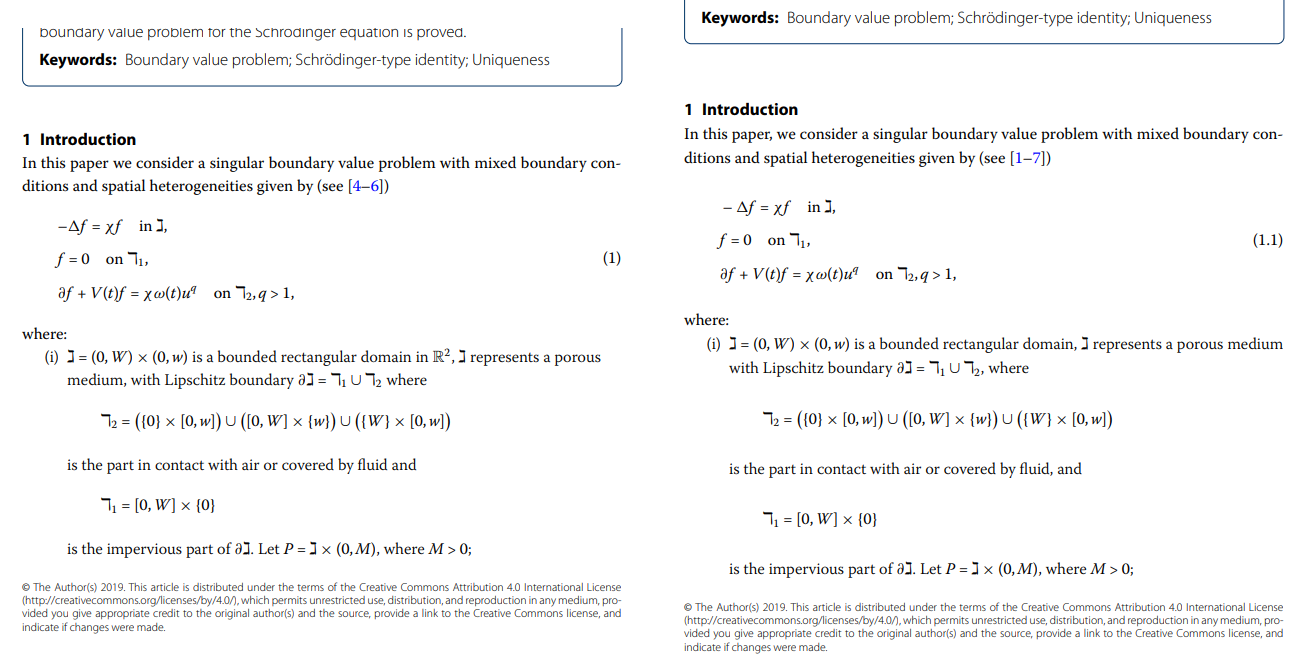
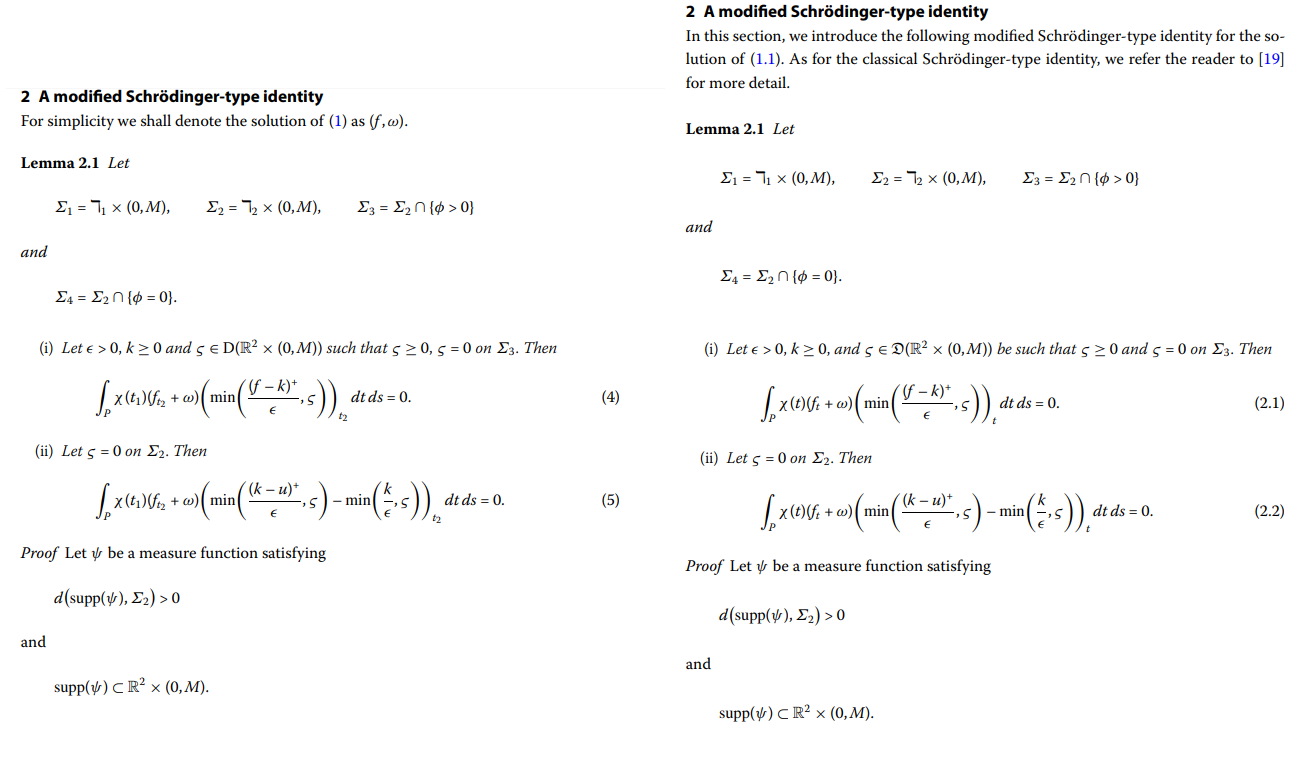




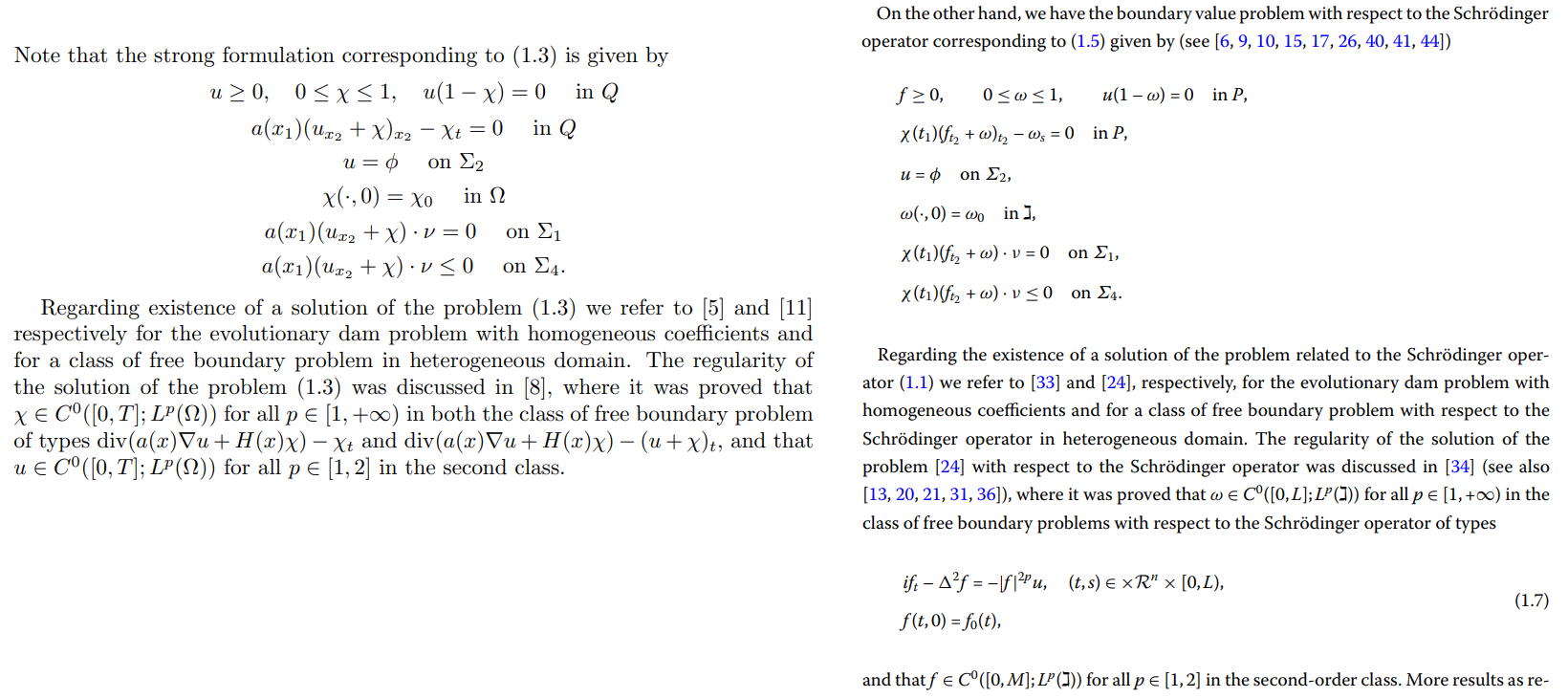

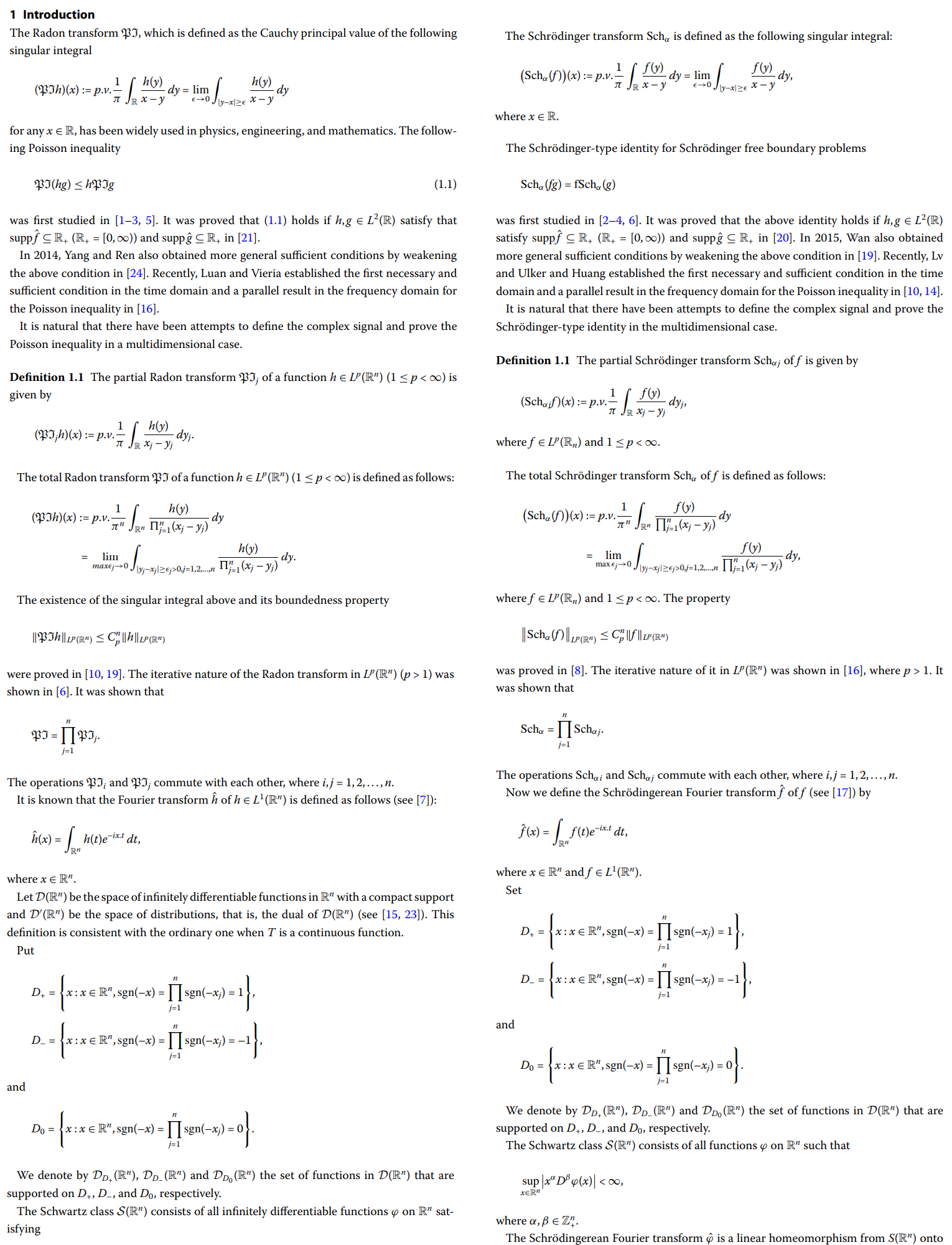


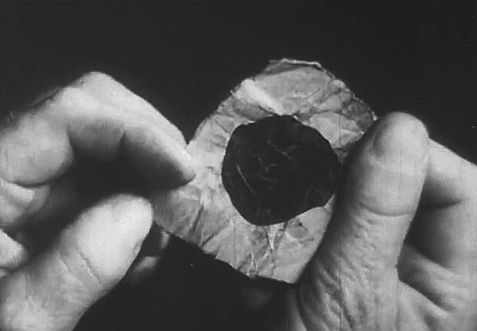
No comments:
Post a Comment